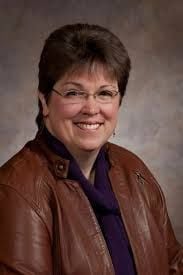Image

By
Senator Kathleen Vinehout
From Arrowhead to West Salem, voters across the state are considering the future of their school districts when they go to the polls. Citizens in 46 districts will be asked to approve referenda.
Some questions relate to the building of new facilities. However, 46% of this year’s referenda are for the on-going expenses of operating local schools.
I received many calls about school funding, property taxes and the problems underlying the questions voters face on the ballot.
“Aren’t referenda usually passed to build something new?” an Eau Claire man recently asked me. For many years, most school referenda asked voters to approve new construction. About ten years ago, there began a steady rise in the number of referenda to increase property taxes to pay for school operations.
Referenda for operations include the usual costs related to the daily operations of a school: keeping the lights on, heating the building, transporting students and paying for staff. Personnel costs make up 70% to 80% of a school’s budget. Logically a school that needs money to pay on-going expenses needs that money for staff costs.
Many constituents tell me they are unhappy about paying salary costs through referenda. Somehow, they can justify a new gym but not a new math teacher.
Early in 2011, a law known as Act 10 eliminated most union protections for teachers. Consequences of losing those protections led to increased costs. Teachers retired early. Fewer college students graduated with a teaching degree. The resulting teacher shortage caused competition between school districts for the few teachers left to fill critical positions.
Also in 2011, majority party lawmakers made deep cuts to state support for public schools in the 2011-13 state budget. They also diverted more state money to private schools.
The result is that today the actual state dollars going to public schools is lower than the amount public schools received a decade ago. This little known budget fact combined with increasing costs helps explain the increase in school referenda for operations.
Not only are there fewer dollars, but those dollars are flowing through a decades old formula that does not match today’s world.
Schools are paid by the state on per student basis. This method does not match the pattern of expenses – or cost structure – schools experience. In other words, there is a fundamental disconnect between what drives school revenue and what drives school costs. For example, when three students leave from a class of 20, district revenues are cut by 15 percent. But the cost of teaching a class of 17 is almost the same as teaching a class of 20.
In addition, the school general aid formula assumes that every student costs the same to educate regardless of background, capability or language skills. Consider, for example, that over 70% of primary grade students in Arcadia are English Language Learners. Consider, for example, that child poverty doubled in Wisconsin over a decade. Students from a difficult family background can perform at the same level as their peers upon graduation – but these students cost more to educate.
Finally, the school formula assumes every district has the same cost structure regardless of whether it has 300 or 3,000 students, and regardless of whether it covers 15 square miles or 150 square miles. Any rural superintendent will tell you the state pays only about 10 cents of every dollar of transportation costs.
Fewer state dollars, higher costs, fewer teachers, children who need more resources – all these factors add up to needs at the local school that are increasingly not met by state resources. So voters are asked to pony up through their property tax bill.
Property tax is an antiquated measure of wealth. Property rich farmers in 1848 might have been the wealthiest of folks. However, no longer does property value match real wealth.
Passing referenda will stop the hemorrhaging at our schools. However, the fundamental problems in school funding must be fixed. Real reform must accomplish three things: reduce our reliance on property taxes; recognize some students cost more to educate; recognize that school districts face different challenges and therefore different cost structures.
Until we have enough votes to pass those changes, please vote to support your local school.
